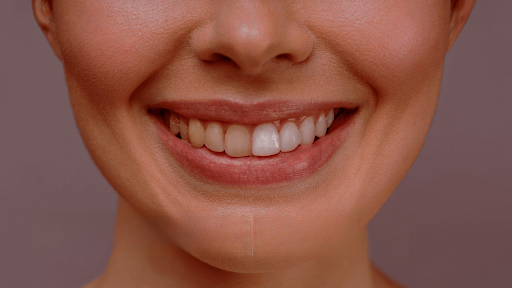
When it comes to enhancing your smile, veneers are among the most popular cosmetic dental solutions available. They offer a quick and effective way to correct discolored, chipped, or uneven teeth. But with several materials to choose from, one question comes up often: Ceramic veneers vs. porcelain veneers—which is better?
Both options have their strengths and limitations, and the right choice often depends on your personal goals, budget, and dental condition. Let’s break it down.
What Are Dental Veneers?
Veneers are ultra-thin shells placed over the front surface of teeth to improve their appearance. They are custom-made to match your natural teeth in color, shape, and size.
They are commonly used to:
- Whiten stained teeth
- Close small gaps
- Fix chipped or broken teeth
- Create symmetry
- Improve overall smile aesthetics
Among the many types of materials available, ceramic and porcelain are the most requested for premium aesthetic results.
Understanding Ceramic Veneers
Ceramic veneers refer to restorations made from various types of dental ceramic materials. These include zirconia-based ceramics and lithium disilicate (like IPS e.max). They are known for their
- High strength
- Durability
- Natural translucency
- Biocompatibility
Ceramic veneers are often considered a premium option, offering a balance between beauty and toughness.
Understanding Porcelain Veneers
Porcelain is actually a subtype of ceramic, but in dentistry, the term “porcelain veneers” usually refers to ultra-thin laminates made from feldspathic porcelain—a traditional, hand-layered material known for its outstanding esthetics.
Porcelain veneers are ideal for:
- Patients who want the most natural look
- Minor cosmetic corrections
- Light reflection that mimics real enamel
They’re especially popular among actors, models, and professionals looking for that perfect Hollywood smile.
Key Differences Between Ceramic and Porcelain Veneers
Reference:
Dr. Nico Kamosi (accredited member of IAOMT, SMART certified) – London Specialist Dentists clinic in Knightsbridge, London.
Address: Unit A, 4th Floor, 193-195 Brompton Rd, London SW3 1NE
1. Aesthetic Goals
If your primary focus is natural beauty and translucency, then porcelain veneers might be the better choice. Their ultra-thin nature and ability to reflect light make them virtually indistinguishable from natural enamel.
However, modern ceramic materials have come a long way. High-end ceramics like lithium disilicate offer both strength and good aesthetics, making them ideal for patients who want a balance of both.
2. Durability and Longevity
Ceramic veneers—especially those made from zirconia—are known for their strength and longevity. They are less likely to chip or crack, which makes them better suited for patients who grind their teeth or have bite issues.
Porcelain veneers, while strong, can be more prone to chipping under pressure and are generally best for front teeth that experience less bite force.
Beyond just durability, the longevity of these veneers is also an important factor. With proper care, ceramic veneers can last for 15 years or more, making them a long-term investment in your smile. According to this dentist who does orthodontics in Williamsburg, regular dental checkups and good oral hygiene are essential to ensure the veneers and the underlying teeth remain healthy, extending the life of your restoration.
3. Tooth Preparation
One of the major advantages of porcelain veneers is that they can be applied with minimal tooth reduction. In many cases, the natural tooth structure is barely altered, making the procedure more conservative.
Ceramic veneers may require slightly more tooth preparation, depending on the thickness of the material and the desired outcome.
4. Biocompatibility
Both porcelain and advanced ceramics are biocompatible, meaning they won’t irritate the gums or surrounding tissue. However, some patients report better gum response with high-grade ceramic veneers, especially zirconia-based options.
5. Treatment Time
Porcelain veneers, particularly those crafted by hand in a dental lab, may take more time to design and fit. Ceramic veneers, especially those made using CAD/CAM technology, can sometimes be fabricated faster—even on the same day in some clinics.
6. Cost Considerations
Porcelain veneers are typically more affordable than zirconia-based ceramic veneers. However, prices vary depending on:
- Location
- Lab expertise
- Dentist experience
- Number of teeth being treated
Ceramic veneers may come at a higher price but often provide greater durability in the long run.
Reference:
Dr. Nico Kamosi (accredited member of IAOMT, SMART certified) – London Specialist Dentists clinic in Knightsbridge, London.
Address: Unit A, 4th Floor, 193-195 Brompton Rd, London SW3 1NE
Final Verdict: Which One Is Better?
There is no one-size-fits-all answer. The best veneer for you depends on your specific needs, expectations, and dental condition.
Choose porcelain veneers if:
- You want a highly aesthetic, natural-looking result
- Your cosmetic concerns are minor
- You prefer a minimally invasive procedure
Choose ceramic veneers if:
- You prioritize strength and durability
- You have bite issues or clenching habits
- You’re okay with a slightly thicker restoration
Consulting with a skilled cosmetic dentist ensures that you receive the material that best suits your smile goals, facial structure, and lifestyle.

